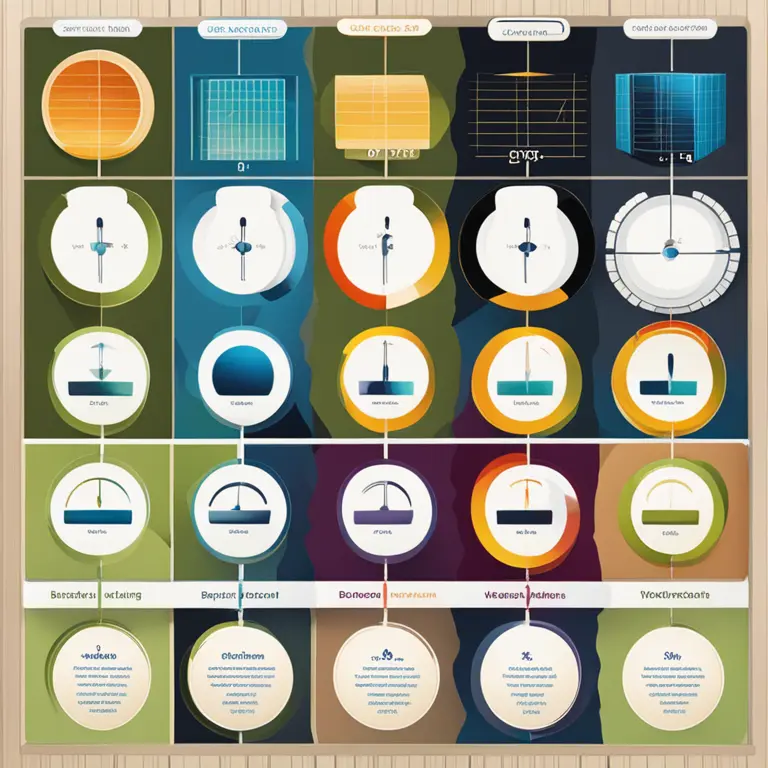
The Accuracy of Biorhythm Calculations
Delve into the legitimacy of biorhythm theory as we analyse its principles and scientific grounding in predicting personal cycles.
article by Adrian Wallace
Introduction to Biorhythms
Biorhythms are a concept that suggests that our lives are influenced by natural physiological cycles. Originating from the 19th century, the theory proposes that human life is governed by three primary cycles: physical, emotional, and intellectual. These cycles are believed to start when we are born and to wax and wane in regular patterns throughout our lifetime. The physical cycle is said to run for 23 days, the emotional for 28 days, and the intellectual for 33 days. Proponents of biorhythm theory claim that by charting these cycles, one can predict periods of high performance, emotional strength, and mental acuity, as well as low phases in each area.

Evaluating Scientific Support
Scientific interest in biorhythms peaked in the 1970s when the first calculators and charts became accessible to the public. However, subsequent research has struggled to provide empirical support for the theory. Critics argue that there is no biological foundation for the exact cycles that biorhythm theory advocates. Most modern scientists and psychologists agree that while humans do experience cycles in physiology and behavior, these cycles are not as predictable or as neatly segmented as the biorhythm model suggests. In fact, many variables, including environment, genetics, and personal habits, influence our daily performance and well-being.
Biorhythms and Personal Experience
Despite the lack of scientific endorsement, biorhythm calculators and applications continue to be popular. This is likely because the idea of predictable, personal cycles is appealing and can compel individuals to become more attuned to their body’s rhythms. Anecdotal reports from biorhythm enthusiasts claim that awareness of one's cycles can lead to better life management and decision making. However, without substantial scientific backing, such personal accounts remain subjective and cannot be generalized as evidence for the accuracy of biorhythms.
Psychological and Placebo Effects
It is essential to consider the psychological and placebo effects when evaluating the perceived accuracy of biorhythms. If a person believes that they are in a high phase of their intellectual cycle, they may approach intellectual tasks with more confidence, potentially improving performance. On the other hand, if they anticipate a low phase, they might unconsciously behave in ways that confirm their expectations. This self-fulfilling prophecy points to the power of belief rather than the validity of the biorhythm theory itself.
Biorhythms in Decision Making
Some people use biorhythm calculations to make important life decisions. However, relying solely on biorhythms for decision-making can be problematic, particularly if it discounts other more evidence-based factors. While understanding one's personal rhythms may be insightful, it's crucial to approach biorhythm predictions with a critical eye and consider them as one of many tools for personal reflection, rather than a definitive guide.
The Future of Biorhythm Theory
With advancements in biometrics and wearable technology, we may see a resurgence of interest in biorhythms. Future devices could potentially track physiological data more accurately, perhaps lending new insights into personal cycles. However, any new iteration of the biorhythm concept would need to withstand rigorous scientific evaluation to be considered a reliable predictor of personal performance and well-being.
Published: 1/30/2024
Modified: 1/30/2024
More predictions
Come back here soon to learn more about yourself and your future


The Rhythms Within: An Insight into Biorhythms
Discover the science and philosophy behind biorhythms, the cyclical patterns our bodies follow, in connection with our physical, emotional, and intellectual states.


A Guide to Biorhythms Journey
Embark on a journey of self-discovery through the science of biorhythms to optimize your life's potential.


Unlocking The Biorhythms Guide
Delve into the fascinating world of biorhythms to learn how they influence your physical, emotional, and intellectual states, potentially shaping your daily life and decisions.